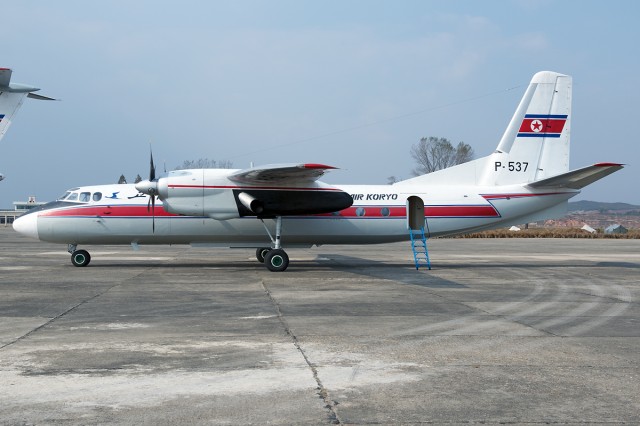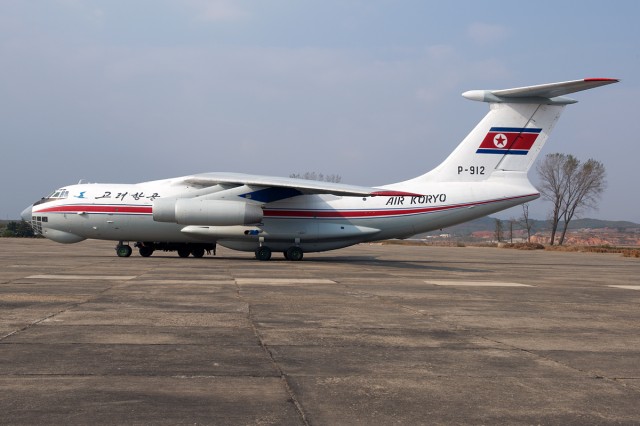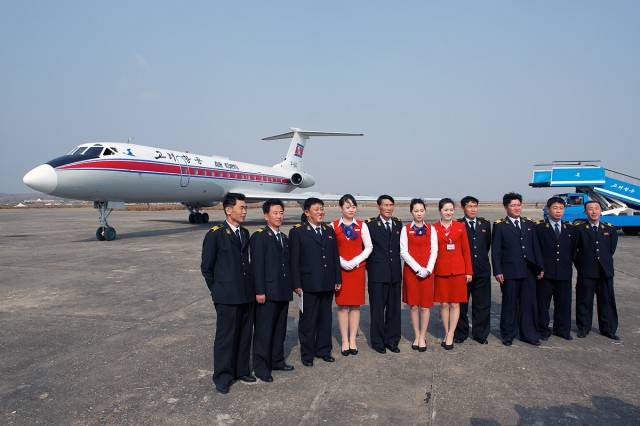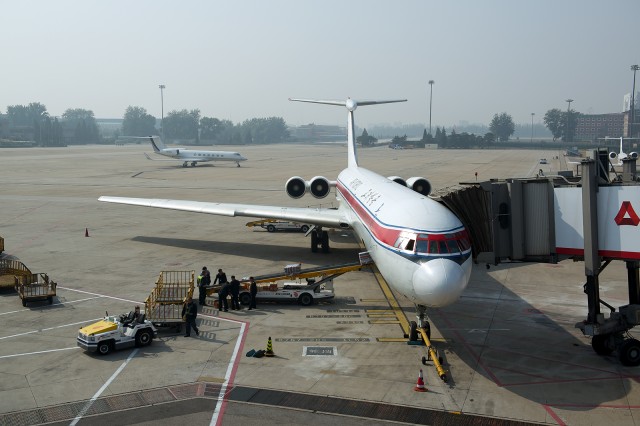
Air Koryo AN-24B (P-537) parked at Sondok
Antonov’s AN-24 is probably the easiest of the classic Russian aircraft to hitch a ride on. With at least 800 still in service in eastern Europe, central Asia, Cuba, and Africa, usually all it takes to fly one is a creative routing. Of course, none of those AN-24 are operated by Air Koryo, the national airline of North Korea.
The AN-24 is a stereotypical high-winged turboprop. More akin to the classic Dash-8s, rather than the newer Q400s. It was built to take off from nearly anywhere and land on the most ’œunprepared’ airfields Soviet surveyors and engineers could throw at it. P-537, the AN-24B I flew on, landed in Sondok shortly after my arrival flight via an Air Koryo IL-76.
We were not allowed to photograph the interior until after lunch in Hamhung, but were permitted to walk around the airframe and take plenty of photographs. After lunch, I fought my way to the front of the line to ensure that I would have the opportunity to take an unobstructed cabin shot. My patience and persistence paid off.

Air Koryo IL-76MD (P-912) sitting in North Korea.
After UPS stopped doing weekend passenger charters with specifically configured 727s, hitching a ride on a freighter became something most civilians could only dream of. Even then, their charter aircraft had windows, conventional seats, easily accessible lavatories, and galleys. Although a 727 is a unique aircraft to fly on these days, I prefer Russian metal.
Soviet-era freighters are iconic. Anyone who has ever seen an AN-124 (Ruslan) land at KPAE knows the kind of crowd they can draw. I didn’t get to travel on a Ruslan, but I did get to go on the most common Russian cargo aircraft: The IL-76MD.
P-912 was one of the last IL-76MDs ever made, despite still being equipped with the ubiquitous Soloviev D-30. Rolling off the line in 1990, this aircraft has been with Air Koryo ever since. Those of you who read my IL-18 article will remember my primary complaint: It was not loud enough. The IL-76 totally comes through.

Air Koryo Tupolev TU-134 (P-814) with crew.
Read Bernie’s other Russian Metal reports of the Ilyushin IL-62 and the Ilyushin IL-18.
Andrei Tupolev was an engineering hero. When he saw that the Tu-124’s wingroot engines were sub-optimal for unpaved airfields and difficult to maintain, he decided to change it and create what would be the most prolific regional jet of the Warsaw Pact: the Tupolev Tu-134.
With most of the Russian airlines having replaced their Tu-134 with Canadair Regional Jets, once again- Air Koryo (airline code: JS) is your best bet to catch a ride. Flights within Democratic People’s Republic of Korea (DPRK) are always challenging to arrange. Not only do you need permission from the landing and departing airport, you also need permission to overfly every province and air defense district.
It turns out that ’œflying on a vintage Russian aircraft’ is not enough to satisfy the DPRK bureaucracy. As such, the tour guides always needed a more conventional ’œtouristy’ reason for the flights to be conducted for approvals to be granted quickly. On top of that, the guides had to be granted permission to leave Pyongyang months in advance.

An Air Koryo Ilyushin IL-62 in Beijing, ready for boarding. Photo by Bernie Leighton.
To fly on an Ilyushin IL-62 in 2012 is not something many people would think of doing, let alone going to the lengths I did to enjoy the privilege.
On October 20, 2012 after months of planning, amounts of Euro cash that had bank-tellers convinced I was a spy; a lovely jaunt to Beijing on Air Macau and a visit to Datangshan, I was standing at the check in counter for Air Koryo in Terminal 2 at Beijing Capital International Airport (PEK). Oddly, and unfortunately for collectors of rare boarding passes, flights to Pyongyang are issued on Air China stock.
Chinese police, and politeness didn’t really allow me to capture the sight of the sheer amount of cargo the North Korean people were taking back but it was the contents I found more curious than the volume. A cursory search of the bindles and exposed boxes showed mostly flat-screen TVs and other completely civilian commercial goods.



